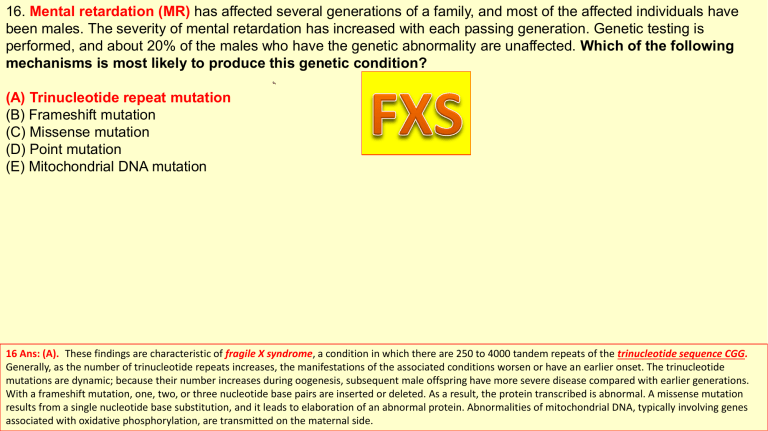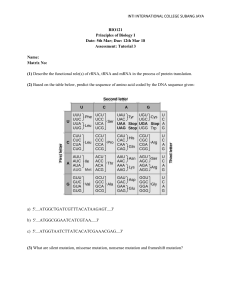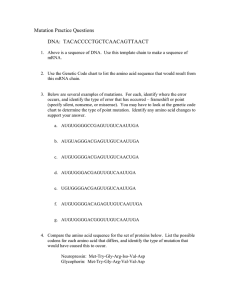
16. Mental retardation (MR) has affected several generations of a family, and most of the affected individuals have been males. The severity of mental retardation has increased with each passing generation. Genetic testing is performed, and about 20% of the males who have the genetic abnormality are unaffected. Which of the following mechanisms is most likely to produce this genetic condition? (A) Trinucleotide repeat mutation (B) Frameshift mutation (C) Missense mutation (D) Point mutation (E) Mitochondrial DNA mutation 16 Ans: (A). These findings are characteristic of fragile X syndrome, a condition in which there are 250 to 4000 tandem repeats of the trinucleotide sequence CGG. Generally, as the number of trinucleotide repeats increases, the manifestations of the associated conditions worsen or have an earlier onset. The trinucleotide mutations are dynamic; because their number increases during oogenesis, subsequent male offspring have more severe disease compared with earlier generations. With a frameshift mutation, one, two, or three nucleotide base pairs are inserted or deleted. As a result, the protein transcribed is abnormal. A missense mutation results from a single nucleotide base substitution, and it leads to elaboration of an abnormal protein. Abnormalities of mitochondrial DNA, typically involving genes associated with oxidative phosphorylation, are transmitted on the maternal side.




